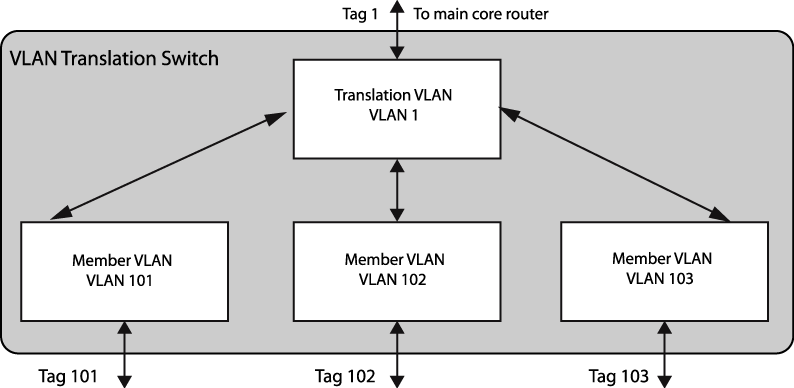The VLAN (Virtual LAN) translation feature described in this section provides the same VLAN translation functionality that is provided for PVLANs. This is described in VLAN Translation in a PVLAN.
The difference is that this feature is configured with different commands that are compatible with ExtremeWare.

Note
The VLAN translation feature described in this section is provided for those who are already familiar with the ExtremeWare VLAN translation commands. If you have not used this feature in ExtremeWare and do not use any scripts that use the ExtremeWare commands, we suggest that you use the Private VLAN feature described in Private VLANs, as it provides the same functionality with additional features.
The VLAN translation feature is supported only on the platforms listed for this feature in the license tables in the ExtremeXOS 22.3 Feature License Requirements document.
VLAN Translation Switch Configuration shows how VLAN translation is configured in the switch.

VLAN1 is configured as a translation VLAN . The translation VLAN is equivalent to the network VLAN in the PVLAN implementation of VLAN translation.
VLANs 101, 102, and 103 are configured as member VLANs of translation VLAN1. The member VLANs are equivalent to the non-isolated subscriber VLANs in the PVLAN implementation of VLAN translation.
This configuration enables tag translation between the translation VLAN and the member VLANs. All member VLANs can communicate through the translation VLAN, but they cannot communicate through Layer 2 with each other.

 Print
this page
Print
this page Email this topic
Email this topic Feedback
Feedback